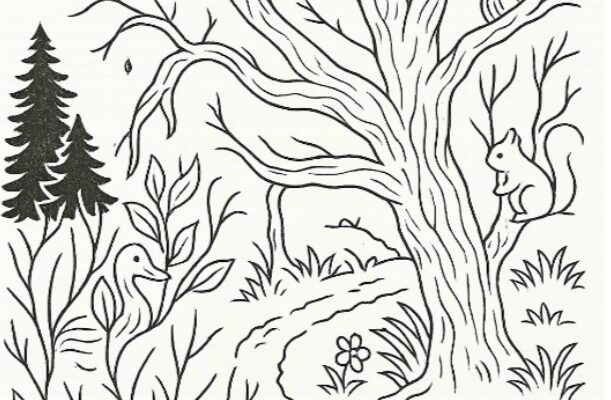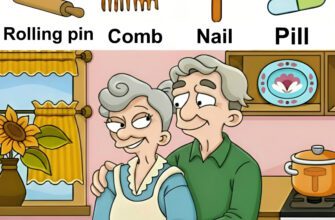Discover the Magic of an Enchanting Woodland Scene
Embark on a Colorful Journey Through the Forest
Have you ever found yourself daydreaming about wandering through a tranquil forest, where birds chirp overhead, rabbits hop between bushes, and a gentle path beckons you deeper into nature’s embrace? If so, you’re in for a treat. The detailed black-and-white illustration above captures exactly that feeling—a winding forest trail flanked by tallest trees, curious woodland creatures, and a sense of boundless adventure waiting to unfold. Whether you’re an avid colorist, a nature lover, or simply someone seeking a calm mental escape, exploring and coloring this enchanting woodland scene promises hours of immersive relaxation and creative fun.

Why Coloring Woodland Wildlife Is More Than Just Fun
Ever wondered why coloring images of forests and woodland animals feels so soothing? It’s not just about filling in shapes with crayons or markers. Studies have shown that engaging in creative activities—like coloring—activates the brain’s reward system, helping to reduce stress and promote mindfulness. When you focus on shading the fur of a fluffy rabbit or bringing the bark of a gnarled tree to life, your mind slips into a gentle rhythm, letting go of daily worries. In our busy world, carving out a few moments to color a detailed scene like this can feel like a mini-escape—an opportunity to pause, breathe, and reconnect with simpler joys.
Meet the Forest’s Friendly Residents
Take a close look at the illustration. Among the twisting branches of the central oak tree, a cheerful squirrel perches, wondering what tasty acorns might be hidden under the leaves. Nearby, a curious bunny nibbles on fresh grass, boasting big, bright eyes that seem to sparkle with mischief. Below eye level, a slithering snake inches along the forest floor, reminding us that forests thrive with life at every level—from the canopy to the underbrush and everything in between.
Then there’s the graceful duck, half-concealed among leafy ferns, perhaps searching for a cozy pond just beyond view. Up in the branches, a confident songbird has found its perfect perch—a spot where it can serenade the whole woodland with cheerful melodies. Each creature adds its own flavor to this idyllic scene: the squirrel’s playful energy, the bunny’s gentle inquisitiveness, the snake’s silent elegance, and the duck’s serene wisdom. When you color these animals, you’re not just filling in lines—you’re honoring the intricate ecosystem they represent.
The Beauty of a Meandering Forest Path
Notice how the trail curves off into the distance? That winding path is more than just a design element—it’s an invitation to embark on a journey. In literature and art, winding paths often symbolize life’s unpredictable twists and turns. They remind us that sometimes the most rewarding discoveries happen when we let go of a rigid route and explore the unknown. As you choose rich earth tones, vibrant greens, and soft browns to bring this trail to life, imagine the cool mist on your face and the gentle crunch of fallen leaves beneath your feet. Maybe you’ll decide to color in a cluster of autumnal oranges and deep reds, suggesting that this scene unfolds when the forest is at its most radiant. Or perhaps you’ll opt for springtime pastels, hinting at hopeful new growth and cheerful blooms.





